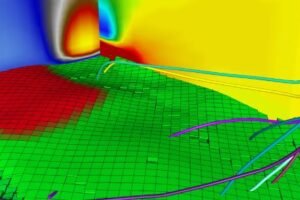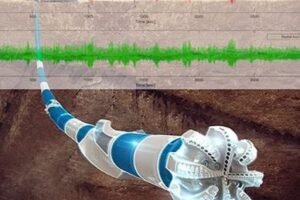🛰️ 2D and 3D Seismic Interpretation
📘 Course Description: This course provides participants with a comprehensive understanding of 2D and 3D seismic interpretation, focusing on practical skills required for effective subsurface mapping and hydrocarbon prospect evaluation. Participants will learn how to interpret seismic data in time …
Overview
📘 Course Description:
This course provides participants with a comprehensive understanding of 2D and 3D seismic interpretation, focusing on practical skills required for effective subsurface mapping and hydrocarbon prospect evaluation. Participants will learn how to interpret seismic data in time and depth domains, correlate with well data, build structural and stratigraphic frameworks, and assess reservoir potential. Real-world examples and interpretation exercises using actual datasets will be emphasized throughout.
🎯 Who Should Attend:
-
Geologists & Geophysicists
-
Exploration & Development Teams
-
Subsurface Engineers
-
Reservoir Modellers
-
Technical Interpreters and Earth Scientists
-
E&P Data Analysts and Geoscience Technicians
🧾 Training Format:
-
Duration: 5 Days
-
Mode: In-person / Virtual Live
-
Methodology: Lectures, seismic interpretation demos, hands-on exercises using interpretation software or printed seismic lines
-
Materials Provided: Seismic sections (2D & 3D), well logs, interpretation guides, maps, and model examples
🗓️ Daily Agenda with Time Breakdown
🟨 Day 1 – Introduction to Seismic Interpretation & 2D Concepts
| Time | Topic |
|---|---|
| 09:00 – 09:30 | Welcome, Objectives & Course Overview |
| 09:30 – 10:30 | Seismic Principles Refresher: Reflection, Velocity, Resolution |
| 10:30 – 10:45 | ☕ Coffee Break |
| 10:45 – 12:15 | Anatomy of a 2D Seismic Section – Horizons, Faults, Terminations |
| 12:15 – 13:15 | 🍽️ Lunch Break |
| 13:15 – 14:45 | 2D Interpretation Workflow: Line Selection, Well Ties |
| 14:45 – 15:00 | ☕ Coffee Break |
| 15:00 – 16:30 | Practical: Horizon & Fault Picking on 2D Lines |
🟨 Day 2 – Structural Interpretation Using 2D and Transition to 3D
| Time | Topic |
|---|---|
| 09:00 – 10:30 | Structural Styles in Seismic: Extensional, Compressional, Inversion |
| 10:30 – 10:45 | ☕ Coffee Break |
| 10:45 – 12:15 | Correlation of 2D Sections and Structural Mapping |
| 12:15 – 13:15 | 🍽️ Lunch Break |
| 13:15 – 14:45 | Introduction to 3D Seismic Volumes and Navigation |
| 14:45 – 15:00 | ☕ Coffee Break |
| 15:00 – 16:30 | Hands-On: 3D Volume Orientation and Inline/Crossline Views |
🟨 Day 3 – 3D Seismic Interpretation and Fault Mapping
| Time | Topic |
|---|---|
| 09:00 – 10:30 | 3D Horizon Interpretation and Tracking Techniques |
| 10:30 – 10:45 | ☕ Coffee Break |
| 10:45 – 12:15 | Fault Picking: Throw, Dip, Relay Zones, and Fault Geometry |
| 12:15 – 13:15 | 🍽️ Lunch Break |
| 13:15 – 14:45 | Seismic Attributes for Structural Mapping |
| 14:45 – 15:00 | ☕ Coffee Break |
| 15:00 – 16:30 | Practical: Fault & Horizon Mapping in 3D Cube |
🟨 Day 4 – Stratigraphic Interpretation and Reservoir Characterization
| Time | Topic |
|---|---|
| 09:00 – 10:30 | Stratigraphic Features: Onlap, Downlap, Unconformities |
| 10:30 – 10:45 | ☕ Coffee Break |
| 10:45 – 12:15 | Seismic Facies and Reservoir Geometry |
| 12:15 – 13:15 | 🍽️ Lunch Break |
| 13:15 – 14:45 | Seismic-Well Tie and Time-Depth Conversion Essentials |
| 14:45 – 15:00 | ☕ Coffee Break |
| 15:00 – 16:30 | Isochron and Attribute Maps for Reservoir Prediction |
🟨 Day 5 – Integrated Case Study and Prospect Mapping
| Time | Topic |
|---|---|
| 09:00 – 10:30 | Mapping Prospects and Traps: Structural, Stratigraphic, Combination |
| 10:30 – 10:45 | ☕ Coffee Break |
| 10:45 – 12:15 | Volumetric Calculations & Risk Assessment from Seismic |
| 12:15 – 13:15 | 🍽️ Lunch Break |
| 13:15 – 14:45 | Group Exercise: Build a Subsurface Interpretation Map |
| 14:45 – 15:00 | ☕ Coffee Break |
| 15:00 – 16:30 | Presentation of Results, Q&A, Certification |
Target audiences
- Reservoir Engineers, Geologists
You May Like
🛢️ Geomechanics and Rock Mechanics for Drilling Optimization
📘 Course Description: This course provides an in-depth understanding of geomechanics and rock mechanics principles as they apply to drilling optimization. It focuses on predicting and mitigating wellbore instability, mud losses, stuck pipe incidents, kicks, and well control issues. Participants …
🛢️ Introduction to Reservoir Geomechanics and Its Application
📘 Course Description: This course introduces the fundamentals of reservoir geomechanics and explores its applications throughout the lifecycle of hydrocarbon reservoirs—from drilling and production to enhanced recovery and field abandonment. Participants will gain a solid understanding of the stress-strain behavior …
🛢️ Advanced Exploration and Drilling Geomechanics
📘 Course Description: This advanced course is designed for professionals involved in exploration and drilling who require in-depth understanding of applied geomechanics. It focuses on advanced geomechanical modeling, prediction, and mitigation of wellbore instability, drilling-induced fractures, fault reactivation, and subsurface …
🪨 Introduction to Geomechanics
📘 Course Description: This foundational course introduces geoscientists, engineers, and technical professionals to the principles and applications of geomechanics in the oil & gas, mining, civil engineering, and environmental sectors. Participants will learn how rock and soil mechanical behavior affects …
🤖 Integrating AI in Workplace Safety Practices
📘 Course Description: This forward-thinking course explores how Artificial Intelligence (AI) is revolutionizing workplace safety. Participants will gain hands-on understanding of AI tools and how they can predict hazards, prevent incidents, enhance inspections, and improve emergency response. From machine learning …






